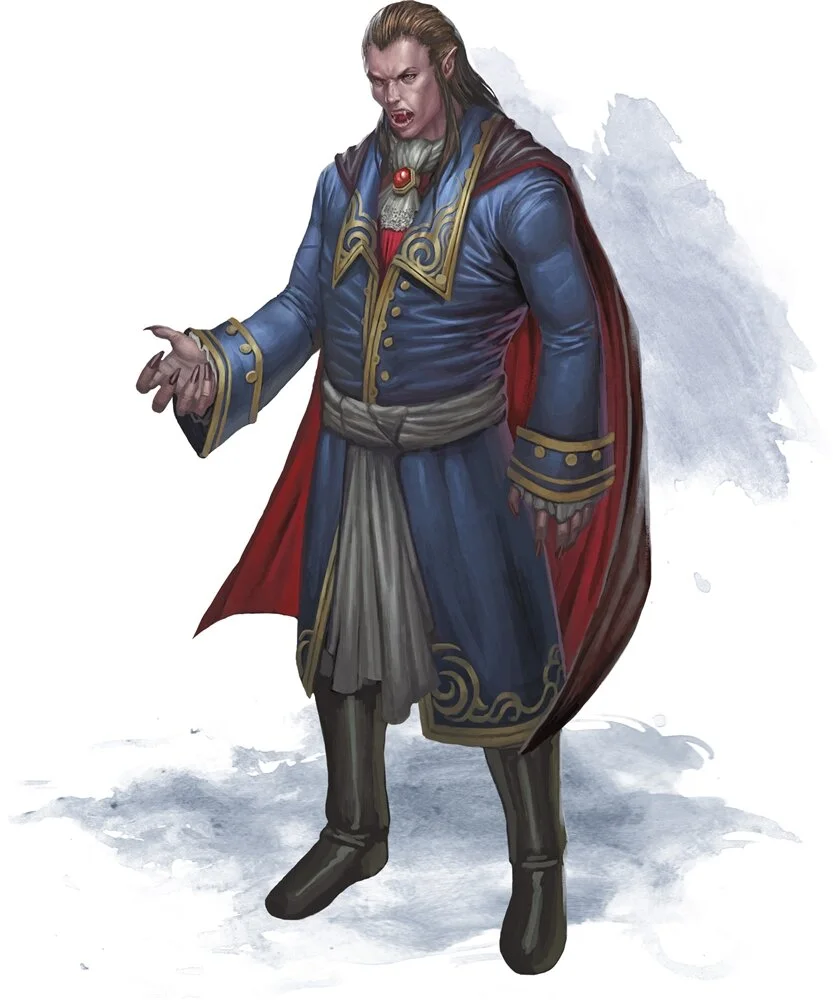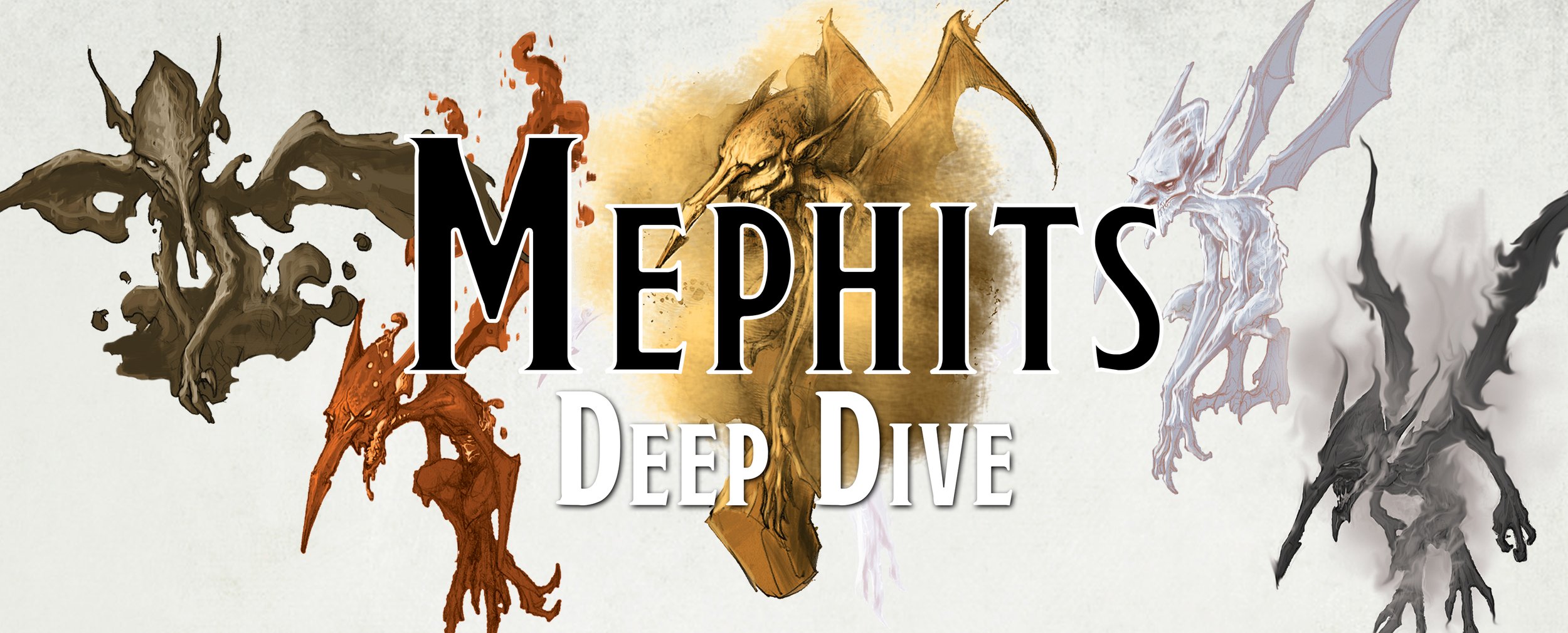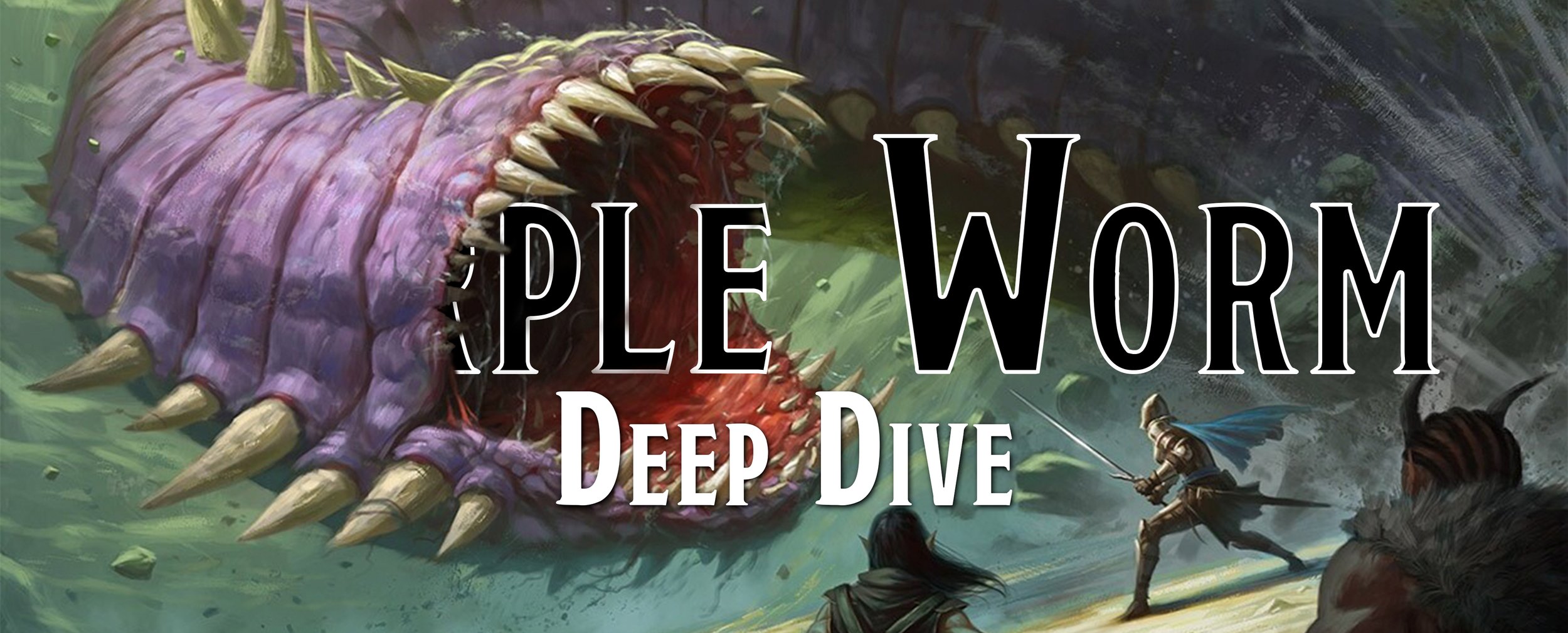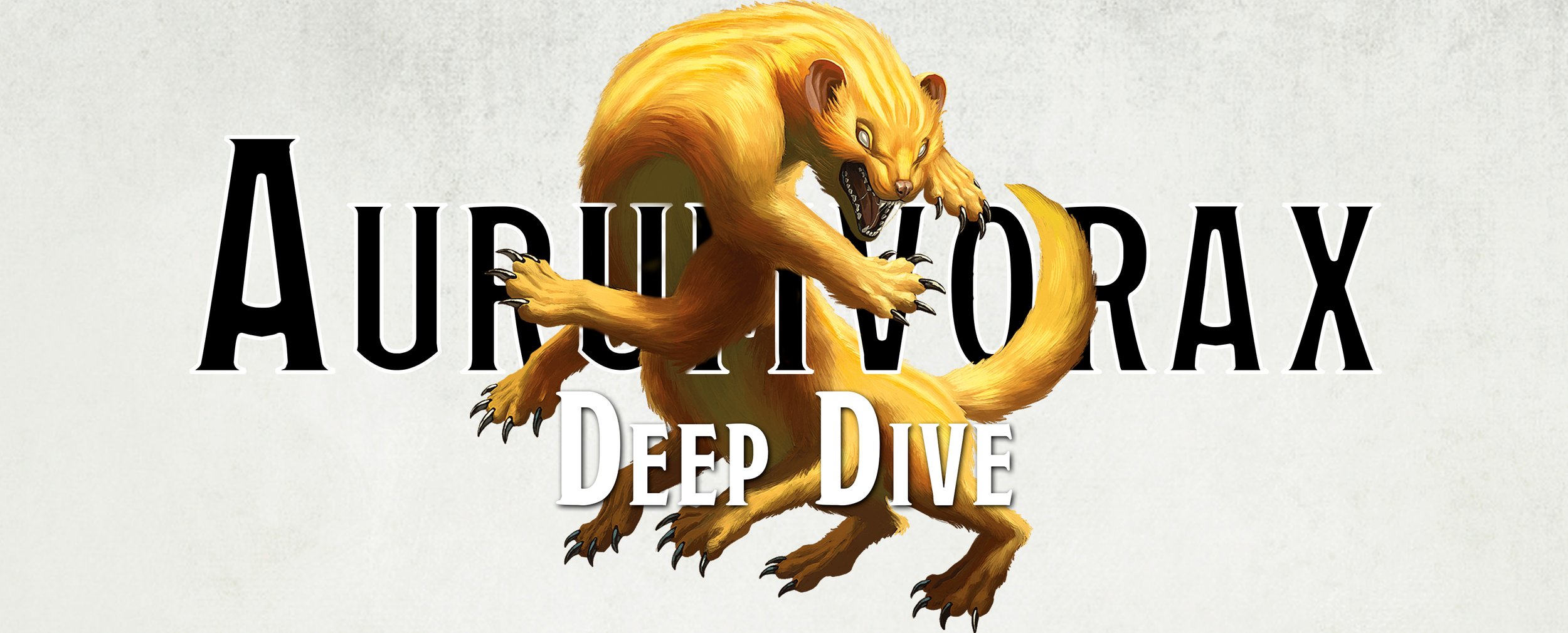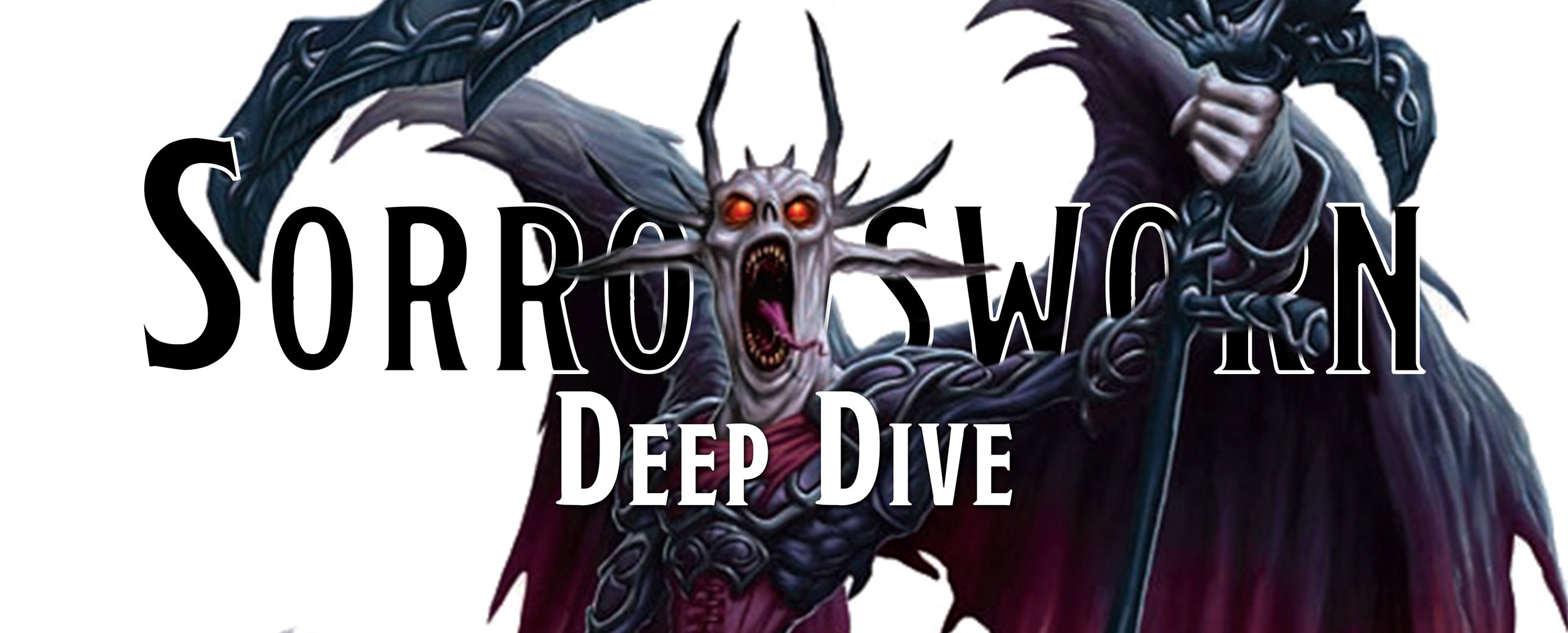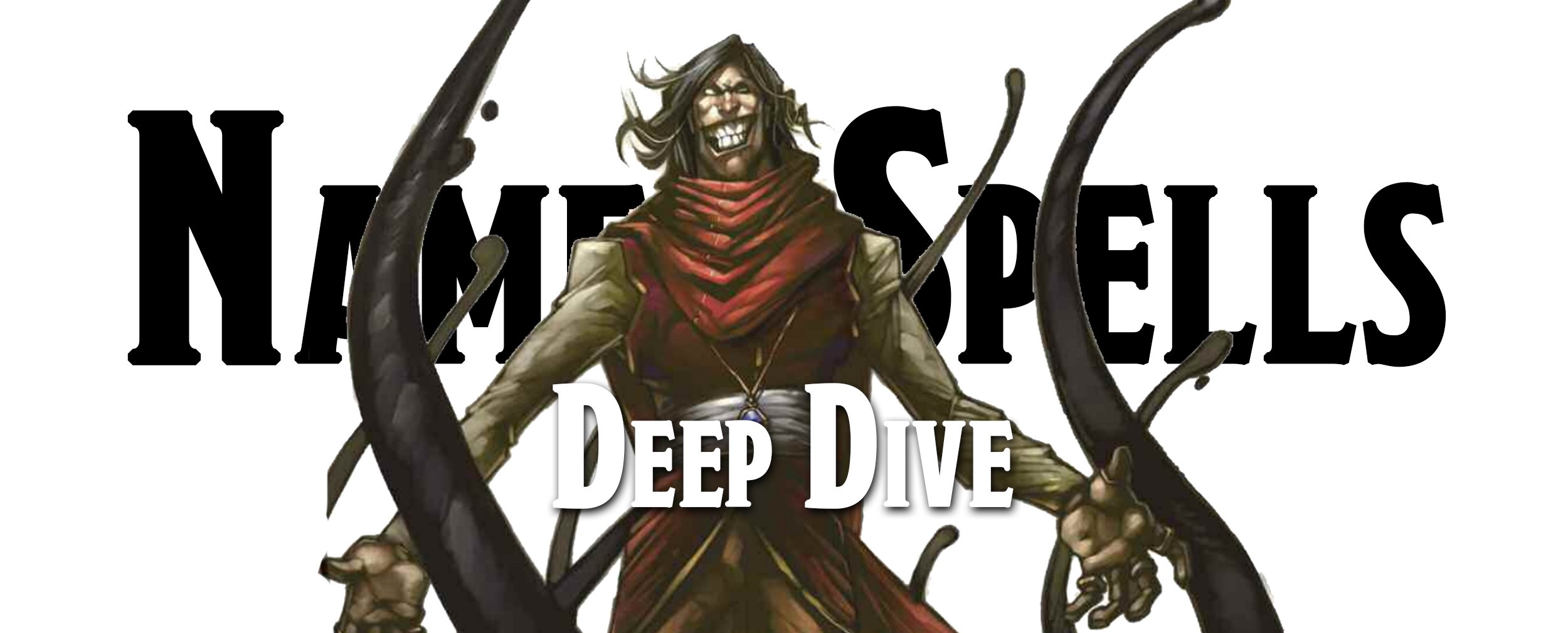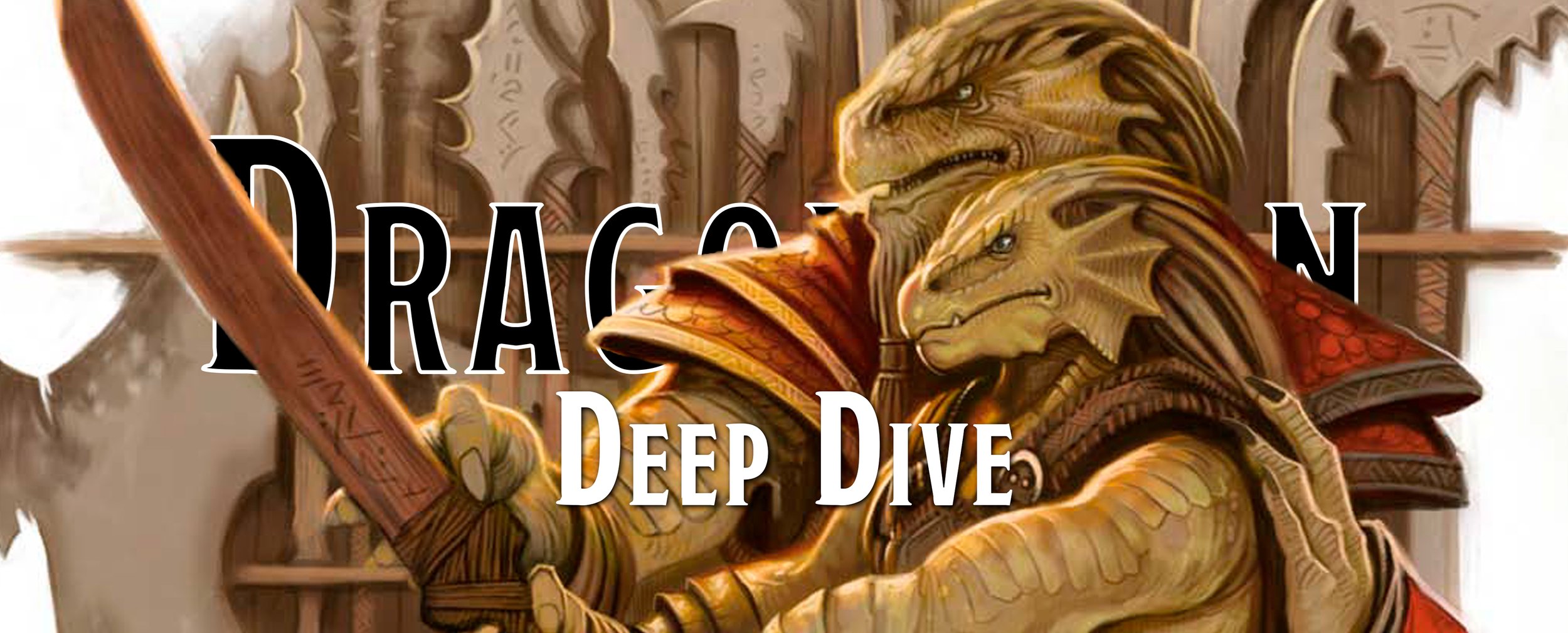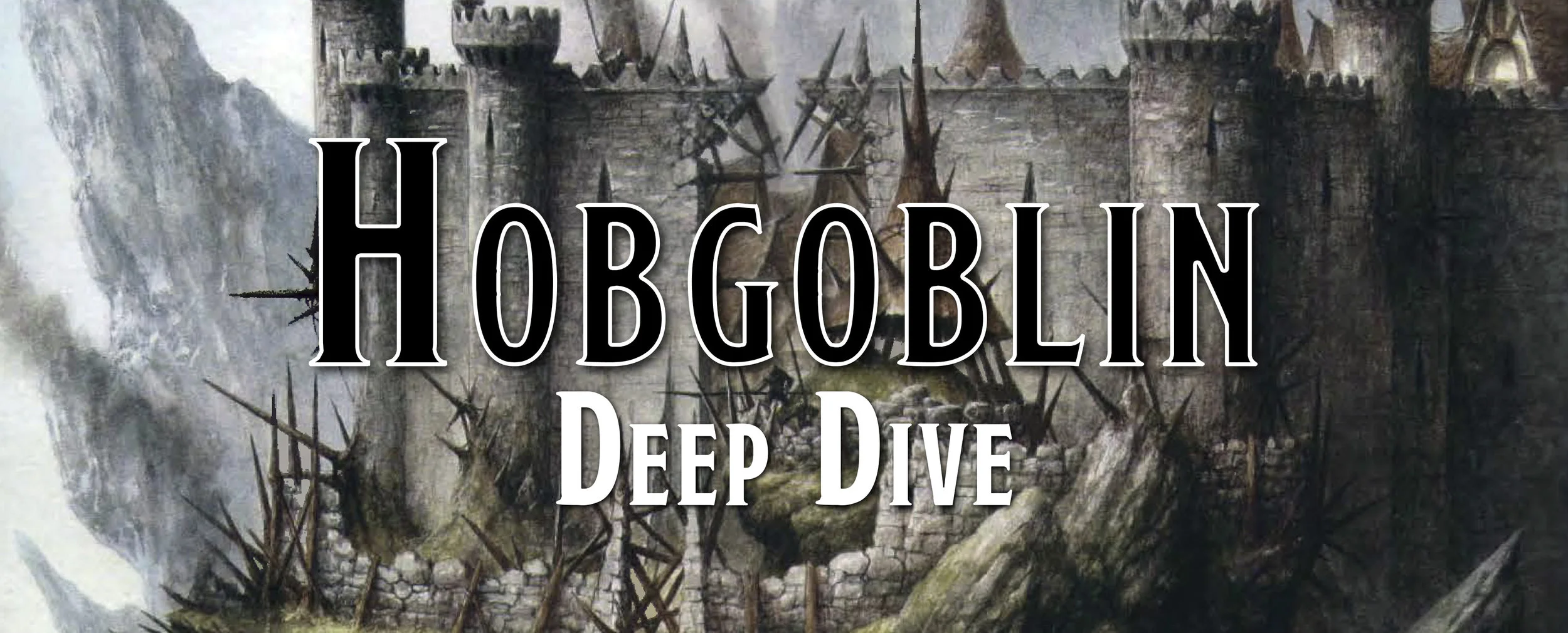Deep Dive - The Vampire
The last in our classic horror monster slash Halloween Series is the Vampire, arguably the most iconic of all the classic monsters. The Vampire has been the star of over 190 movies, and if you add in books and TV shows… well, we can’t be bothered to count that much. The Vampire has been woven into our culture, especially over the last 100 years that it is hard to imagine a world without them.
You can’t talk Vampires without first mentioning Dracula, who is far and away from the most famous of all vampires… err, sorry Strahd. Most people agree that Bela Lugosi provided the world with the best portrayal of Dracula in Dracula (1931), but one could argue that Max Schreck in Nosferatu (1922) was way creepier. Chris, though, is partial to Christopher Lee, who got to be Dracula in two different vampire movies, The Horror of Dracula (1958) and Count Dracula (1970). Both movies were pretty great so if you get a chance, check them out.
But Count Dracula isn’t the only Vampire, here are just a few other actors who have played vampires other than Dracula. Sorry if we missed your favorite Vampire from film and TV, but the list is really long: Kiefer Sutherland in The Lost Boys (1987), Paul “Pee Wee” Reubens in Buffy the Vampire Slayer (1992), Christopher Walken in The Addiction (1995), Wesley Snipes in Blade (1998), Johnny Depp in Dark Shadows (2012), and Dominic Cooper in Abraham Lincoln: Vampire Hunter (2012). These may not represent the best Vampires in cinematic history, but it proves the next point we wanted to make. Vampires have been interpreted in so many ways throughout history, there is no right or wrong way to play one. Sutherland gave us a Vampire in the throes of teenage angst, Snipes played a famous comic book Vampire, Dark Shadows was campy fun, and Vampires even met and saved the president of the United States! One person's vision of a Vampire will most likely be different than yours.
Why do we bring this up? We all know Strahd, as he is the most famous of all Vampires in Dungeons and Dragons. Vampires were always serious evil creatures that you didn’t want to run into, and Strahd was no different. Strahd was one of the first baddies to be given a fully fleshed out background. He was played as the serious BBEG, no messing around and he was out to kill you. In 5e, Strahd spreads his acting wings and allows the DM to have the ability to play him in several ways. Sure, he’s a bad guy that wants to kill you, but now he wants to fuck with you first.
So let’s take a look at the Vampire and how they have changed throughout the editions of Dungeons and Dragons.
OD&D - Vampire
No. Appearing: 1-6
Armor Class: 2
Move: 12", Fly: 18”
Hit Dice: 7-9
% in Lair: 20%
Treasure Type: F
No. of Attacks: 1
Damage/Attack: Special
Save: F7/M12
Alignment: Chaos
The Vampire was introduced in the Dungeons & Dragons White Box (1974). The very first thing the description tells us is that the Vampire is an undead creature and not a lycanthrope. Those of you that have been living under a rock and want to know why on earth the vampire might be considered a lycanthrope can go on to read that they can change into a giant bat or a gaseous form. How big of a giant bat? We have no idea, but being a giant bat is pretty cool.
Then, we descend into every other Vampire stereotype that is out there. Direct sunlight equals one dead and crispy Vampire. Impaled through the heart with a wooden stake…dead. Sign of the cross, shown a mirror or given a piece of pizza with extra garlic? Our blood-sucking friend runs away, hissing and cursing you that he’ll be back. Bedtime for the Vampire equals sleeping in their coffin during daylight hours. You can be charmed by the Vampire, doing the evil one’s bidding, or more likely, being convinced to go give him a hug so he can suck you dry. If men-types (This is the terminology used in the book. Got to love the sexist 70’s) are killed by a Vampire, they will become one and be under the control of the one that made them. One thing we found odd was there was no mention of holy water causing damage to them. That seems to us to be the biggest damage-causing attack missing, and it’s too bad, cause any cleric worth their salt will have some on them and would love to splash it on the undead.
Now that the stereotypes are covered, the creators add in some of their own “flavor” to our favorite cape-wearing bad guy. If a Vampire is submerged in running water they will are killed. Researching vampire lore, there isn’t any mention of running water killing Vampires, but that they cannot cross running water. A lesser-known defense is that because vampires are unclean and unholy creatures, they can not cross running water because running water is perceived as clean and pure. The water has to be moving, as stagnant water has a higher chance of being diseased and bacteria that cause these diseases.
Next up are the powers of the Vampire and they aren’t great if you are a player. It can regenerate, summon a few pets to join the fight or charm themselves a few new friends from the party. Now, when we say summon a few pets when we mean Vampires can summon 10 to 100 bats or rats, or 3 to 18 wolves. That’s a lot of pets, and the fact that they can always stare at your party members and charm just keeps stacking the deck against you.
Finally, we get into the whole “drinking your blood” vampire thing. The description gets a little convoluted on this issue.
…otherwise they can be hit only as Spectres, but such hits do not kill them but only force them to assume gaseous form if they lose all hit points. Vampires drain two life energy levels as do Spectres when they hit an opponent in combat.
Dungeons & Dragons White Box (1974)
We feel like the creators were tired by the time they got to the “v” monster section and didn’t feel like creating a whole new set of rules for the effects of drinking the blood of their victims, so instead, they made the ability the same as the spectre. It’s not that we can’t get behind this, because when you stop and think about it, it makes complete sense. Not setting up a whole set of new mechanics is a smart call and makes it easier for the DM. The problem is we wish they had given it a better description instead of falling back on the term ‘energy drain’. It’s technically correct, but you could have at least mentioned they needed to drive their fangs into the neck of their victims to drain their energy. They are called bloodsuckers for a reason folks!
Basic D&D - Vampire
Armor Class: 2
Move: 120’ (40’), Flying: 180’ (60’)
Hit Dice: 7-9
No. of Attacks: 1 touch + special
Damage/Attack: 1-10 + energy drain
No. Appearing: 1-4 (1-6)
Save As: Fighter 7-9
Morale: 11
Treasure Type: F
Alignment: Chaotic
The Vampire next shows up in Dungeons & Dragons Basic Set (1977). Not much changes in this version, but a few things are clarified and adjusted. They may not be exciting but are important to help further develop the creature. Of utmost importance is that the energy drain is clearly defined. In the White Box, there is no actual definition of energy drain beyond how they describe it in passing in the wight’s monster information, which is you remove a hit die and level from the character.
“Energy Drain: A successful hit by certain undead monsters will drain energy from the victim. Unlike other special attacks, there is no saving throw against an energy drain. Each energy drain will destroy one level of experience of a character, or one hit die of a monster. The creature drained of energy loses all the benefits (attack level, saving throws, spells, etc.) of the former level. This effect cannot be cured.”
D&D Expert Booklet (1981)
Vampires are unaffected by sleep, charm, and hold spells. It makes sense and follows the basic mechanics of other undead creatures in Dungeons & Dragons. A character slain by a Vampire will return from death as a Vampire in 3 days. It’s good that they specify the length of time it takes to turn the creature since the previous edition left it wide open for interpretation. There is no mention of how to prevent this from happening, which is too bad since your party now has an amount of time to potentially find a cure for your new undead condition… maybe a preemptive stake through the heart?
You can still be charmed by a Vampire, falling completely under their control. And because Vampires cannot use spells or magic… you know they are going to target the Magic-User first so they can cast our favorite “fuck you” spell at their allies… Fireball.
We also get additional details of the weaknesses of Vampires. A Vampire may take the form of a human, a dire wolf, a giant bat, or a gaseous cloud at will, but doing so takes 1 round. It may not be much, but a round where they can’t attack is a big deal. In dire wolf or giant bat form, the Vampire will move, attack, and do damage according to the statistics for those creatures. The Vampire's armor class, hit dice, morale, and saving throws remain unchanged. They get the best of both worlds in this scenario. When they change into gaseous form, a Vampire can fly at the listed speed and has immunity to all weapon attacks. A Vampire cannot attack while in gaseous form. This is an escape from, as they can move through cracks in the walls, to a height where they are out of reach, and under dungeon doors.
Speaking of weaknesses, this edition goes on to clarify that silver weapons do nothing against the Vampire, holy symbols only stop them if the symbol is directly in their path and that the Vampire needs to sleep in a coffin with a bottom layer of dirt from where they used to live. Which seems like an interesting distinction for any Vampire that wishes to travel the world and is forced to bring a coffin of dirt from his homeland, and depending on how specific you want to get, the dirt from his childhood home’s garden.
AD&D - Vampire
Frequency: Rare
No. Appearing: 1-4
Armor Class: 1
Move: 12”/18”
Hit Dice: 8+3
% in Lair: 25%
Treasure: F
No. of Attacks: 1
Damage/Attack: 5-10
Special Attacks: Energy Drain
Special Defenses: +1 or better magic weapon to hit
Magic Resistance: See Description
Intelligence: Exceptional
Alignment: Chaotic evil
Size: M
Psionic Ability: Nil
Monster Manual, 1977 TSR Inc.
In, what Chris claims as, the best edition ever, the Vampire appears in the Monster Manual (1977). Once again, our bloodsucking buddy gets a little more powerful than in the previous editions. One of the best lines in all of the Vampire descriptions through the editions is that the Vampire must rest in a coffin or ‘similar receptacle’. We have no idea what a similar receptacle is, but the wording makes us smile.
Vampires see a nice bump in their attacks, with a hit now dealing 5-10 damage plus an energy drain of 2 levels. That’s nuts. You get hit once and you lose 2 levels worth of experience, hit points, abilities that you can’t get back? You don’t want to be the tank when you’re fighting a Vampire. Even if you end up killing the Vampire, if your tank dies, they are still going to come back as a free-willed Vampire. We’re not sure how many players will feel comfortable with Grak the Vampire, formerly Grak the Fighter from the party, but we can’t imagine it’s many.
Killing a Vampire gets annoying hard. You think that you’ve landed that killing blow on your undead enemy only to see them turn into a gas cloud and high tail it for their coffin. They need to get back within 12 turns and when they get back to the sanctuary of the coffin, they need to sleep for 8 hours. After a brief siesta, our rejuvenated friend will turn back into humanoid form. Hopefully, you can follow the cloud back to the coffin, as you can bet your ass the Vampire will hunt you down once they are all healed up… and the sun isn’t up.
Remember how driving a stake through the Vampire’s heart would kill it? Now it only kills it until someone is dumb enough to remove the stake. For the Vampire to truly be dead, you need to cut its head off and fill its mouth with holy wafers. That’s wafers, not water. I’ve seen no other mention of holy wafers anywhere in Advanced Dungeons and Dragons, so you’ll probably just have to leave that stake in its heart, hide the body and take its head with you on all your adventures in search of holy wafers.
This edition also introduces us to the Eastern Vampire. While they lose the ability to charm people and cannot transform themselves into a gaseous mist on command, they are invisible. Losing the ability to charm their intended victims may seem like a big nerf, but because they are invisible, they can sneak up behind you and bite your neck, it doesn’t seem like that big of a loss.
One last thing…remember our complaint about holy water not doing anything against Vampires? Now it does 2-7 points of damage per vial. If you’re the cleric that’s great since you don’t want to get too close.
In May 1979, Dragon #25 came out, and with it came a huge influx of new vampires to add to your game. We aren’t talking about 1 or 2 new vampires, but 14 new vampires! This includes the: alp, catacano, mulo, noferat, vlkodlak and many, many more. They have expanded abilities, like the Burcolakas, from Greece, can kill by naming a victim and commanding them to take a fatal action. And that’s all we hear on that… no more information on how that works, so let’s check out another one.
The Ekimmu, from Assyria, is invisible and it still has the ability to charm other creatures. Furthermore, it can also magic jar its opponents… which seems pretty sensible as far as a Vampire pantry is concerned. And lastly, it can only be killed if you subdue it long enough for a wooden sword to kill it. Which brings to question… can you count a wooden stake as a wooden sword if everyone convinces the Ekimmu it really is just a fat, short rapier?
And it only gets crazier from there. One last example is the Krvopijac Vampire, from Bulgaria, which you can find its coffin by putting a virgin on a black foal, this doesn’t specify sex or age so that’s easy to accomplish. Throw a few babies on a saddle and then you let the black foal walk around the suspected area that the Krvopijac Vampire’s sleeping area is, wherever the foal refuses to go is where your Vampire is sleeping away. Then to stop the Vampire, you can chain it to its coffin with a rope of wildflowers, which the magazines helpfully points out might eventually break, or you could have your cleric order the Vampire’s soul into a vial of blood and then chuck that into the fire… Neither seems like really doable options for killing a Krvopijac Vampire… Oh! We swear one last thing… it only has one nostril so that’s horrifying.
2e - Vampire
Climate/Terrain: Any land
Frequency: Rare
Organization: Solitary
Activity Cycle: Night
Diet: Special
Treasure: F
Intelligence: Exceptional (15-16)
Alignment: Chaotic Evil
No. Appearing: 1-4
Armor Class: 1
Movement: 12, Fl 18 (C)
Hit Dice: 8+3
THAC0: 11
No. of Attacks: 1
Damage/Attack: 5-10
Special Attacks: Energy Drain
Special Defenses: +1 or better magic weapon to hit
Magic Resistance: See Description
Size: M (5 1/2’-6 1/2’)
Morale: Champion (16)
XP Value: 8,000
Monstrous Manual, 1993 TSR Inc.
The Vampire in 2nd edition first appears in the Monstrous Compendium Volume One (1989) and then reprinted in the Monstrous Manual (1993). We’ve done a good job not bitching about the art lately, but in 2e it is godawful. Purple must be the favorite color of Vampires because both pictures from the Monstrous Manual have them wearing a lot of purple. The picture of the male Vampire is of a poor fashion ignoramus, wearing a dark purple cloak, a purple tunic with matching purple sash and purple tights. We are at a total loss of words. Of course, that has nothing on the artwork for the Monstrous Compendium as it depicts a vampire snarling, though instead of fear it inflicts a sense of… hilarity? It seems to have shaved about half of its hair, has some fierce eyebrows and we can’t tell if it's laughing, crying or just being creepy.
Monstrous Compendium Volume One, 1989 TSR Inc.
The changes in this edition are few but interesting. The Vampire can shape change only into a bat now, but can still disperse its human body to assume gaseous form. If the Vampire wasn’t creepy enough already, it now crawls up a wall and onto the ceiling by the benefit of having the spider climb ability. The last big change is the inclusion of another piece of old school vampire lore. Vampires can not enter into a home without being invited by the owner. Once it has it, it may come and go as it pleases. Better hope you make that charm save, or your new best pal will easily convince you to have him in for tea and some blood.
As always, the 2nd edition dives deeper than the previous editions, providing us with an in-depth look into the lifestyle and ecology of the creature. Vampires have only contempt and hatred for the world around them. They choose to live in areas of death and desolation. Ruined castles or chapels with large cemeteries are popular lairs for them. These dark and gloomy places will not remind them of the lives they used to have, which would bring them great sorrow, and a depressed Vampire is probably not one you want to run into. Since they have lost the life they once knew and are cursed with immortality, they are creatures of pure evil, seeking to bring terror to those around them. Having all the time in the world allows them to methodically plan, only setting their schemes into action when they are certain of success.
Monstrous Manual, 1993 TSR Inc.
Turning their victims is not done for any sort of pleasure. These new Vampires are servants of their master, doing their bidding, no matter how dangerous or trivial it may be. Turned Vampires will often serve as meat shields for their master, being commanded to protect their lord at all costs. So becoming a Vampire bitch can either be very boring or very deadly, depending on your new boss.
2nd edition also brings to us one of the greatest villains in Dungeons & Dragons culture, and you probably already know his name. Strahd von Zarovich. We aren’t going to dive too deep into his history as he is only of hundreds of Vampires, but we will give a brief overview of his introduction.
Monstrous Compendium Volume One, 1989 TSR Inc.
Strahd von Zarovich was created by Tracy and Laura Hickman who created this villain and his home, Ravenloft, over the course of 5 years before releasing him as the villain of the I6: Ravenloft adventure module, released in 1983. He struck fear into fans, and many find him to be a compelling villain. To keep it as spoiler-free as possible, he had done things in his life that was evil and horrible, but many fans can understand where he was coming from and why he did certain things that he did. When it comes time to defeat him, you have to feel a bit of sadness as to what has become of this man searching for love.
Strahd’s home of Ravenloft was later turned into the Ravenloft Campaign setting in the same year, 1983, and became the home for many of the iconic villains of this edition. Ravenloft was made up of different land pieces in a pocket dimension that the prisoners, those like Strahd who were stuck in their lands, would not be able to escape from but had all the power. The prisons, which is really what they were, would only be removed if the prisoners could finally repent for what they have done. This is all ruled over by the Dark Powers, mysterious entities that like to torture the prisoners of the Dark Lands by tempting them with what they wanted most during their life.
3e/3.5e - Vampire
Sample Vampire, 5th-Level Human Fighter
Medium Undead (Augmented Humanoid)
Hit Dice: 5d12 (60 hp)
Initiative: +6
Speed: 30 ft. (6 squares)
Armor Class: 23 (+3 Dex, +6 natural, +4 masterwork chain), touch 13, flat-footed 20 Base Attack/Grapple: +5/+11
Attack: Claw Slam +11 melee (1d6+9 plus energy drain) or +1 spiked chain +13 melee (2d4+12) or masterwork shortbow +9 ranged (1d6/×3)
Full Attack: Slam +11 melee (1d6+9 plus energy drain) or +1 spiked chain +13 melee (2d4+12) or masterwork shortbow +9 ranged (1d6/×3)
Space/Reach: 5 ft./5 ft. (1o ft. with spiked chain)
Special Attacks: Blood drain, children of the night, create spawn, dominate, energy drain
Special Qualities: Alternate form, damage reduction 10/silver and magic, darkvision 60 ft., fast healing 5, gaseous form, resistance to cold 10 and electricity 10, spider climb, undead traits, vampire weaknesses
Saves: Fort +4, Ref +6, Will +4
Abilities: Str 22, Dex 17, Con —, Int 12, Wis 16, Cha 12
Skills: Bluff +9, Climb +10, Hide +10, Listen +17, Move Silently +10, Ride +11, Search +9, Sense Motive +11, Spot +17
Feats: Alertness, Blind-Fight, Combat ReflexesB, DodgeB, Exotic Weapon Proficiency (spiked chain), Improved InitiativeB, Lightning ReflexesB, Mobility, Power Attack, Weapon Focus (spiked chain), Weapon Specialization (spiked chain)
Environment: Temperate plains
Organization: Solitary
Challenge Rating: 7
Treasure: Double Standard
Alignment: Always evil (any)
Advancement: By character class
Level Adjustment: +5
Monster Manual, 2003 WotC
The Vampire in 3.5e is found in the Monster Manual (2000/2003) and has a very different strategy for how it is created and utilized. The description starts by giving us two sample Vampires, a 5th level human fighter and a 9th level half-elf monk/4th level shadowdancer. In 3.5e, Vampires do not have base stats, rather they are created using an acquired template that can be used to make humanoid or monstrous humanoid creatures (referred to hereafter as the base creature) into a blood-sucking monster. A Vampire uses all the base creature’s statistics and special abilities, however, there are some notable changes. Since Vampires are dead, you change the creature’s type to the undead. Current and future Hit Dice are now d12s. The Vampire’s base speed remains the same, and if the base creature had a swim speed, the Vampire retains the ability to swim and is not vulnerable to immersion in running water. That is a huge benefit for the Vampire, as it takes away one of the core ways to damage/kill them.
We finally get the Vampire to drink blood via the Blood Drain Ability! A Vampire now can suck blood from a living victim with its fangs by making a grapple check. If successful, it sucks the target’s blood, draining 1d4 of Constitution each round the target is grappled. Every round the Vampire can use this ability, it gains 5 temporary hit points. If you’re the wizard, it’s just one more reason to stay way in the back and cast spells from a distance.
Children of the Night is the summoning of furry helpers ability that Vampires have had in all prior editions, but with a minor change. They can still summon creatures to assist them against those pesky mortals, but no more 100 rats for the DM to keep track of. Once per day, the Vampire can call forth 1d6+1 rat swarms, 1d4+1 bat swarms, or a pack of 3d6 wolves as a standard action. It’s not a huge change since the number of swarms is equivalent to the previous amounts able to be summoned, but it surely helps with the speed of gameplay.
Dominate replaces their Charm ability. The description is great, as it states that the vampire crushes the will of its target by looking into its eyes. No more friendly charm with a smile, instead they obliterate your hapless soul with just one look. The Vampire must use an action and pick one target, meaning that it does not affect any character just looking at the Vampire. Fail your Will save and you are under the Vampire’s control as if he had cast a 12th level Dominate spell. With a range of 30 ft. we strongly advise covering your eyes and making your attacks blind!
Back to the annoying Energy Drain ability. It is modified a little bit, for now, the target must be successfully hit by a vampire’s slam attack and they lose two levels. Also, for every level it drains you of, the Vampire gains 5 temporary hit points. As we have stated before, this ability is incredibly powerful, and being the tank sucks when fighting a Vampire… actually being anything fighting a Vampire is going to suck… You get it? It’s funny because a Vampire sucks blood… Do you get it now? Sigh, we’ll stop with the jokes now.
Monster Manual, 2003 WotC
Create Spawn spells out in great detail the old and new ways the character becomes a Vampire after dying at the evil fiend’s hands. If a character is slain by a Vampire’s energy drain or if the Vampire instead drains the victim’s Constitution to 0 or lower, it rises as a vampire spawn 1d4 days after burial. Since at any given time a Vampire may have up to twice its Hit Dice in vampire spawn, it is possible that the whole party could be enslaved, making for an interesting campaign moving forward.
The rest of the Vampire remains pretty much the same. Special abilities such as turning into a bat, the creepy ability to spider climb, etc are all still there, and the method of killing one doesn’t change. There are a handful more vampires created for this edition scattered through a few adventure books, dragon magazine, and other places, but none of them can top the craziness of the vampires from earlier editions. Did you know that there was a vampire in 2nd edition that could be killed by putting it in a circle of rice?
4e - Vampire
Vampire Lord (Human Rogue) - Level 11 Lurker
Medium natural humanoid (undead) XP 1,200
Initiative +12 / Senses Perception +10; darkvision
Regeneration 10 (does not function while exposed to direct sunlight)
HP 186; Bloodied 93
AC 29; Fortitude 30, Reflex 27, Will 25
Immune disease, poison; Resist 10 necrotic; Vulnerable 10 radiant
Saving Throws +2 / Speed 8, climb 4 (spider climb) / Action Points 1
Short Sword (standard; at-will) ✦ Weapon +13 vs. AC; 1d6 + 8 damage.
Spiked Chain (standard; at-will) ✦ Weapon +13 vs. AC; 2d4 + 8 damage.
Deft Strike (standard; at-will) ✦ Weapon The vampire lord moves up to 2 squares and makes a melee basic attack at a +2 bonus.
Imperiling Strike (standard; encounter) +15 vs. Fortitude; 1d6 + 10 damage, and the target takes a –3 penalty to AC and Reflex defenses until the end of the vampire lord’s next turn.
Blood Drain (standard; recharges when an adjacent creature becomes bloodied) ✦ Healing Requires combat advantage; +13 vs. Fortitude; 2d12 + 8 damage, the target is weakened (save ends), and the vampire lord regains 46 hit points; see also combat advantage.
Dominating Gaze (minor; recharge ⚅ ) ✦ Charm Ranged 5; +13 vs. Will; the target is dominated (save ends, with a –2 penalty on the saving throw). Aftereffect: The target is dazed (save ends). The vampire lord can dominate only one creature at a time.
Combat Advantage The vampire lord deals an extra 3d6 damage with its attacks against any target it has combat advantage against.
Mist Form (standard; encounter) ✦ Polymorph The vampire lord becomes insubstantial and gains a fl y speed of 12, but cannot make attacks. The vampire lord can remain in mist form for up to 1 hour or end the effect as a minor action.
Second Wind (standard; encounter) ✦ Healing The vampire lord spends a healing surge and regains 46 hit points. The vampire gains a +2 bonus to all defenses until the start of its next turn
Alignment Evil / Languages Common
Skills Acrobatics +15, Athletics +18, Bluff +13, Intimidate +13, Stealth +15, Thievery +15
Str 26 (+13) | Dex 20 (+10) | Wis 11 (+5) | Con 13 (+6) | Int 12 (+6) | Cha 16 (+8)
Equipment leather armor, shortsword
Heroes of Shadow, 2011 WotC
The 4th edition Vampire found in the Monster Manual (2008) is short on description but big on changes to our bloodsucking friend. A Vampire that can turn others into vampire spawn is now referred to as a Vampire Lord. The Vampire Lord does lose some of the abilities they had when they were mortal in order to gain a Vampire’s special abilities. One such ability is the new Dark Gift of the Undying, where the Vampire Lord, in the name of Orcus, transforms another being into another Vampire Lord.
The Dark Gift ability is quite pricy, costing up 80,000 gp to perform, but some may feel that it’s a small price to pay to become immortal. What happens is, after you pay a current Vampire Lord, he takes you out to the graveyard at night. There you drink some of each other's blood, upon which time you die…so sad. The Vampire Lord buries you, does his ritual mumbo jumbo, and prays to Orcus. At sunset the next day, you rise from the ground as a brand spanking new Vampire Lord. The ritual is ruined if a Raise Dead spell is cast on you or some jerk comes along and cuts your head off, so it’s best to keep the number of people that know your plan to a minimum.
4e removes some of the ways you can repel and kill a Vampire, you know since it wasn’t hard enough to do already. Now, Vampires don’t give a shit if you invite them into your home or not, but will just stroll on in and slaughter you and your family. Running water and garlic do jack shit but at least you won’t stink as if you work in a pizzeria now. Wooden stakes hurt them, but no more so than any other sharp weapon.
While the Vampire still likes to mope by themselves, it is possible for them to have a traveling posse to doing their bidding. One Vampire lord is likely hanging out with a wight commander, wight minions and vampire spawns. If you and your friends stumble upon this crew, we hope you have either a level 20 cleric or your running shoes on.
Lastly, there are options in a supplement book Heroes of Shadow (2011) that allow you to take the Vampire class and become the dark lord you always dreamed of! Which is really inclusive to all of our Dark Lords out there.
5e - Vampire
Vampire / Medium undead (shapechanger), lawful evil
Armor Class 16 i(natural armor)
Hit Points 144 (17d8+68)
Speed 30 ft.
Str 18 (+4) | Dex 18 (+4) | Con 18 (+4) | Int 17 (+3) | Wis 15 (+2) | Cha 18 (+4)
Skills Perception +7, Stealth +9
Damage Resistances necrotic; bludgeoning, piercing, and slashing from nonmagical weapons
Senses darkvision 120 ft., passive Perception 17
Languages the languages it knew in life
Challenge 13 (10,000 XP)
Shapechanger. If the vampire isn't in sun light or running water, it can use its action to polymorph in to a Tiny bat or a Medium cloud of mist, or back into its true form. While in bat form, the vampire can't speak, its walking speed is 5 feet, and it has a flying speed of 30 feet. Its statistics, other than its size and speed, are unchanged. Anything it is wearing transforms with it, but nothing it is carrying does. It reverts to its true form if it dies. While in mist form, the vampire can't take any actions, speak, or manipulate objects. It is weightless, has a flying speed of 20 feet, can hover, and can enter a hostile creature's space and stop there. In addition , if air can pass through a space, the mist can do so without squeezing, and it can't pass through water. It has advantage on Strength, Dexterity, and Constitution saving throws, and it is immune to all nonmagical damage, except the damage it takes from sunlight.
Legendary Resistance (3/Day). If the vampire fails a saving throw, it can choose to succeed instead.
Misty Escape. When it drops to 0 hit points outside its resting place, the vampire transforms into a cloud of mist (as in the Shapechanger trait) instead of falling unconscious, provided that it isn't in sun light or running water. If it can't transform, it is destroyed. While it has 0 hit points in mist form , it can't revert to its vampire form, and it must reach its resting place within 2 hours or be destroyed. Once in its resting place, it reverts to its vampire form . It is then paralyzed until it regains at least 1 hit point. After spending 1 hour in its resting place with 0 hit points, it regains 1 hit point.
Regeneration. The vampire regains 20 hit points at the start of its turn if it has at least 1 hit point and isn't in sun light or running water. lfthe vampire takes radiant damage or damage from holy water, this trait doesn't function at the start of the vampire's next turn.
Spider Climb. The vampire can climb difficult surfaces, including upside down on ceilings, without needing to make an ability check.
Vampire Weaknesses. The vampire has the following flaws: Forbiddance. The vampire can't enter a residence without an invitation from one of the occupants.
> Harmed by Running Water. The vampire takes 20 acid damage if it ends its turn in running water.
> Stake to the Heart. If a piercing weapon made of wood is driven into the vampire's heart while the vampire is incapacitated in its resting place, the vampire is paralyzed until the stake is removed.
> Sunlight Hypersensitivity. The vampire takes 20 radiant damage when it starts its turn in sunlight. While in sunlight, it has disadvantage on attack rolls and ability checks.
Multiattack (Vampire Form Only). The vampire makes two attacks, only one of which can be a bite attack.
Unarmed Strike (Vampire Form Only). Melee Weapon Attack: +9 to hit, reach 5 ft., one creature. Hit: 8 (1d8 + 4) bludgeoning damage. Instead of dealing damage, the vampire can grapple the target (escape DC 18).
Bite (Bat or Vampire Form Only). Melee Weapon Attack: +9 to hit, reach 5 ft., one willing creature, or a creature that is grappled by the vampire, incapacitated, or restrained. Hit: 7 (1d6 + 4) piercing damage plus 10 (3d6) necrotic damage. The target's hit point maximum is reduced by an amount equal to the necrotic damage taken, and the vampire regains hit points equal to that amount. The reduction lasts until the target finishes a long rest. The target dies if this effect reduces its hit point maximum to 0. A humanoid slain in this way and then buried in the ground rises the following night as a vampire spawn under the vampire's control.
Charm. The vampire targets one humanoid it can see within 30 feet of it. If the target can see the vampire , the target must succeed on a DC 17 Wisdom saving throw against this magic or be charmed by the vampire. The charmed target regards the vampire as a trusted friend to be heeded and protected. Although the target isn't under the vampire's control, it takes the vampire's requests or actions in the most favorable way it can, and it is a willing target for the vampire's bite attack. Each time the vampire or the vampire's companions do anything harmful to the target, it can repeat the saving throw, ending the effect on itself on a success. Otherwise, the effect lasts 24 hours or until the vampire is destroyed , is on a different plane of existence than the target, or takes a bonus action to end the effect.
Children of the Night (1/Day). The vampire magically calls 2d4 swarms of bats or rats, provided that the sun isn't up. While outdoors, the vampire can call 3d6 wolves instead. The called creatures arrive in 1d4 rounds, acting as allies of the vampire and obeying its spoken commands. The beasts remain for 1 hour, until the vampire dies, or until the vampire dismisses them as a bonus action.
Monster Manual, 2014 WotC
At last, we arrive at the current incarnation of the Vampire, found in the Monster Manual (2014). Vampires in 5e are now given the power and respect they deserve, as they are now extremely powerful, much more so than in the previous editions. The stats and abilities increase across the board and at a CR 13, they are not creatures to be trifled with.
The only two truly unique features in 5e are the small blurb paying homage to the greatest Vampire and BBEG in Dungeons and Dragons lore, Strahd von Zarovich, and a detailed and ghoulish description of a Vampire’s lair. Our Vampire can once again Charm creatures, they can summon small swarms of bats and rats, and they drain blood like a real, gods-fearing Vampire!
The Strahd piece is a brief background and doesn’t really do his story justice. Why is this important and in the *Monster Manual*? It’s the first mention of Strahd in any of the Vampire descriptions and he has been constantly voted the most iconic of all the BBEG’s in all of Dungeons and Dragons, so it only seems right that he is paid homage.
Monster Manual, 2014 WotC
We also are provided with a detailed description of a Vampire’s lair. This is more of a flavor addition to the creature but is worth mentioning. Playing into the concept that Vampires are vain creatures, they choose opulent castles, keeps, or the like, but they must be defensible and in hard to reach locations. It makes sense since this is where the Vampire hides its coffin, without which it is doomed. The coffin will also be guarded by vampire spawn and other creatures that worship the Vampire.
Speaking of vampire spawn, they are created when the Vampire drains you of your blood with their fangs, and then you get put into the ground. You then rise that night as a vampire spawn and are under the complete and total control of the Vampire. The only way you can be an independent Vampire is if you partake of your master Vampire’s blood… Amazingly, it goes on to say that Vampires are reluctant to give up control over you… weird. You’d think such well adjusted and normal monsters wouldn’t want to have slaves they can control with their every whim.
The land around the Vampire’s home is not a place you’d want to vacation. Surrounded by a thick fog, characters can make out twisted and disturbing shapes and figures in the fog. The area is full of our Vampire’s friendly furry creatures like rats, bats, and wolves. In other words, the land around his castle is eerie as hell and very reminiscent of Ravenloft. When you stumble into this landscape, hopefully, you and your party will start to realize the gravity of the situation you’re in.
So that’s our Deep Dive into the Vampire. We hope you enjoyed it, and as always, please feel free to leave your comments below.
If you enjoy our Deep Dive series consider
supporting us on Patreon and following us on Twitter!










